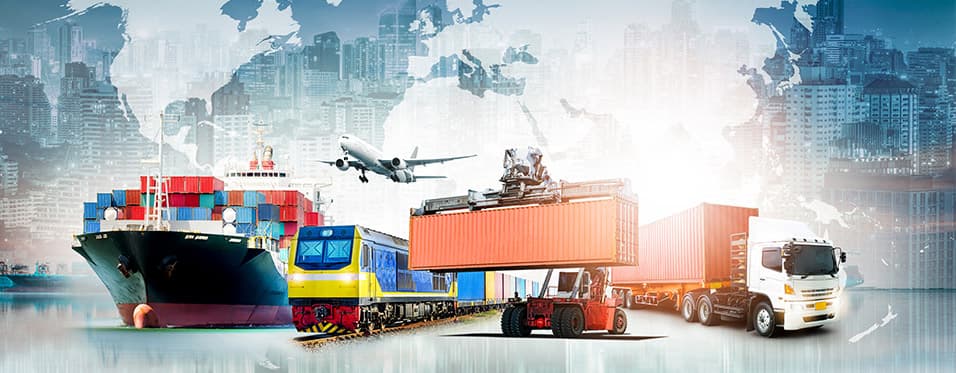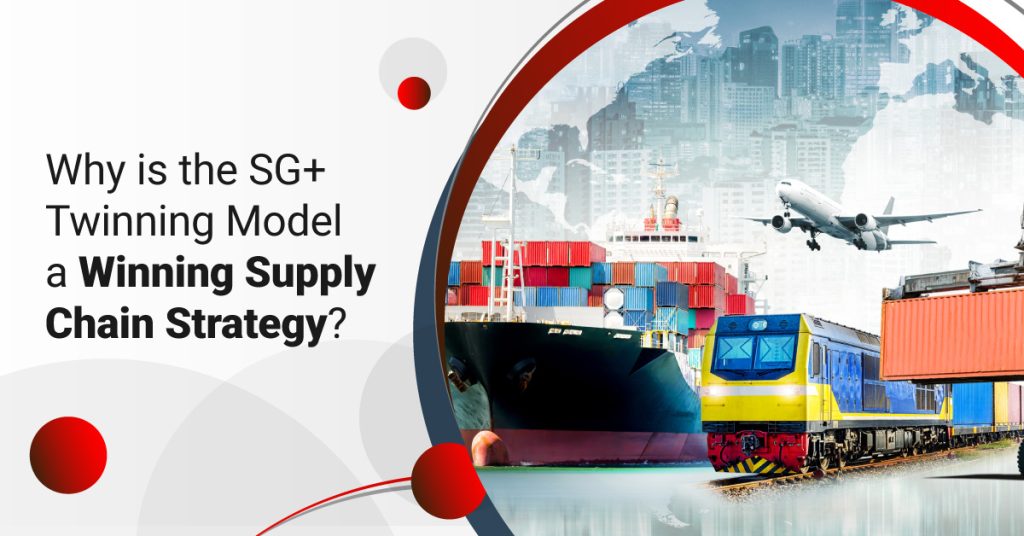
If the last few years have taught us anything about supply chain resilience, it is that putting all of your eggs in one basket is risky.
Between COVID-19 and the economic brinkmanship between the United States and China, we have seen how the lack of diversification can leave supply chains vulnerable to economic and political tradewinds.
Fortunately, there has never been a better time to spread your corporate wings and expand your operations, all while spreading your supply chain risk across multiple countries.
The SG+ Twinning Model
Singapore’s twinning model allows you to have your corporate watch tower in the business-centric city-state and your production subsidiaries in price-competitive ASEAN countries.
There are immense benefits companies can reap from setting up their regional headquarters in Singapore and manufacturing subsidiaries in ASEAN.
Related Read: Industry 4.0: The Growth of Advanced Manufacturing in Southeast Asia »
You may have heard that Dyson, Foxconn, and Samsung are expanding into Southeast Asia to diversify and strengthen their supply chains.
With its strategic location, world-class infrastructure, and supportive government policies, Singapore is a top destination for companies looking to expand their operations in Southeast Asia.
Meanwhile, countries in ASEAN offer cost-competitive manufacturing advantages that make them an ideal location for production subsidiaries.
With that said, let us take a closer look at why the twin model might be the recipe for success for your business.
Singapore as the Gateway to Southeast Asia
Singapore is well-known as a global business hub for regional expansion in Southeast Asia.
As a small island state with a population of only 5.5 million, Singapore punches above its weight in terms of its economic prowess, ranking 3rd in the Global Financial Centres Index, after New York and London.
The country is also a leading logistics hub, owning the world’s second-busiest container port.
With a highly educated and multilingual workforce, Singapore is an ideal control tower for companies looking to expand into Southeast Asia.
Combining Business Advantages with Manufacturing Strength
The Singapore twinning model allows companies to combine the business advantages of Singapore with the manufacturing strengths of neighbouring countries in ASEAN.
By pairing their headquarters in Singapore with manufacturing subsidiaries in ASEAN, companies can access a wider pool of manpower and lower rent and utility costs in ASEAN nations.
Access to Diverse Supply Chain Offerings
One of the biggest advantages of the Singapore twinning model is access to diverse supply chain offerings.
With customised end-to-end facilities and tech solutions that can be tailored to their manufacturing needs, companies can take advantage of the extensive network of suppliers and manufacturers in Southeast Asia.
This allows them to build a resilient and flexible supply chain that can adapt to changing market conditions and minimise disruptions to their operations.
Related Read: 5 Ways Digitalization Shapes Malaysia’s Supply Chain Management »
Lower Costs and Increased Operational Resilience
By leveraging the manufacturing strength of ASEAN, companies can keep production competitive with a wider manpower pool, lower rent and utility costs, and world-class infrastructure.
This enables them to maintain operational resilience and remain competitive, even in the face of economic challenges.
The Singapore twinning model also allows companies with the flexibility to shift production to different locations within ASEAN, depending on market conditions or political stability.
Unlock Differentiated Benefits with the Southeast Asia Manufacturing Alliance (SMA)
The Singapore Economic Development Board and other private sector partners, such as CapitaLand and Sembcorp Development, launched the Southeast Asia Manufacturing Alliance (SMA).
The SMA helps companies better harness the manufacturing strength of Southeast Asia for supply chain resilience and growth.
Eligible businesses can enjoy advantages such as:
- Unlocking differentiated benefits with participating industrial parks
- Receiving support for R&D activities, supplier partnerships, and streamlined setup processes
Current Twin Wins in Singapore
What are some of the current successes of the Singapore twinning model that others can aspire to achieve? We look at some examples:
GDS
China-based data centre operator GDS has plans to build hyperscale data centres in Johor, Malaysia, and Batam, Indonesia.
Singapore will be their regional data hub, facilitating a unified data ecosystem for Southeast Asia.
Alcon
American-Swiss eye care company Alcon has also set up camps in Johor and Batam for their production.
With their regional HQ in Singapore, they aim to strengthen the resilience of their supply chains for worldwide distribution.
Infineon
German semiconductor manufacturer Infineon has set up new manufacturing facilities in Batam while using Singapore as their regional HQ for R&D and logistics.
Twinning to Win
The Singapore twinning model provides companies with the perfect combination of business advantages and manufacturing strength to achieve long-term growth and success in Southeast Asia.
With the support of the Southeast Asia Manufacturing Alliance, businesses can unlock differentiated benefits, build resilient and flexible supply chains, and take advantage of the world-class infrastructure and lower costs in ASEAN nations.
If you are setting up shop in Singapore and expanding into ASEAN, the Singapore twinning model might just be the perfect choice for you.
Contact our team
Posts not found!
FAQs
Why should I use the SG+ twinning programme to expand my business to Southeast Asia?
- International firms that establish dual production sites in Singapore and neighbouring countries can create collaborative manufacturing bases, amplify supply chains, and widen their businesses to SEA.
What is an example of how a business can benefit from the SG+ twinning model?
- A consumer goods electronics manufacturer could set up global R&D operations in Singapore and an assembly factory in Johor for semiconductors to sell overseas.
What are some industries that can tap into the SG+ model leveraging the Bintan, Batam, and Karimun (BBK) islands?
Some examples are:
- Electronics
- Agrifood tech
- Medtech



